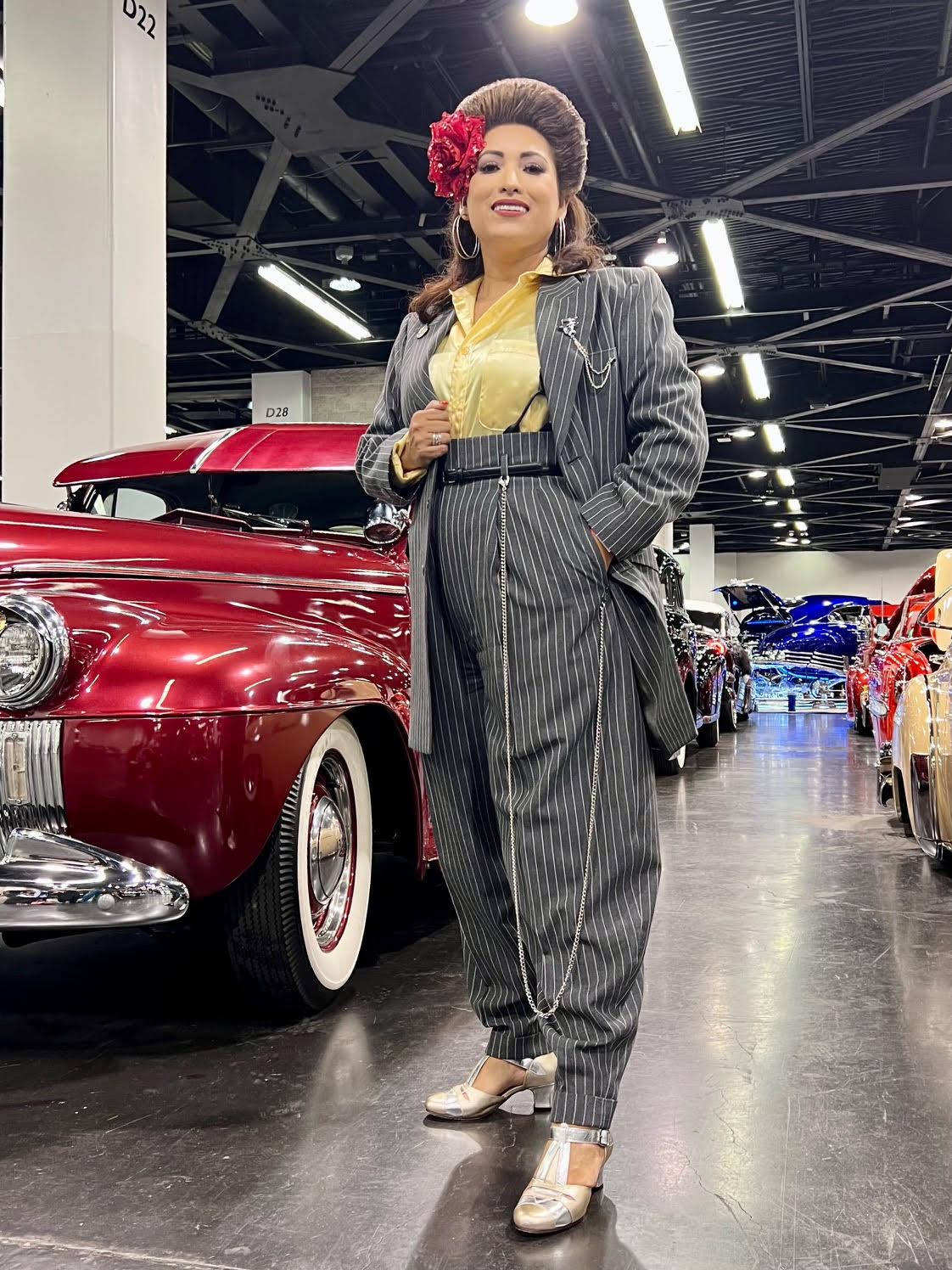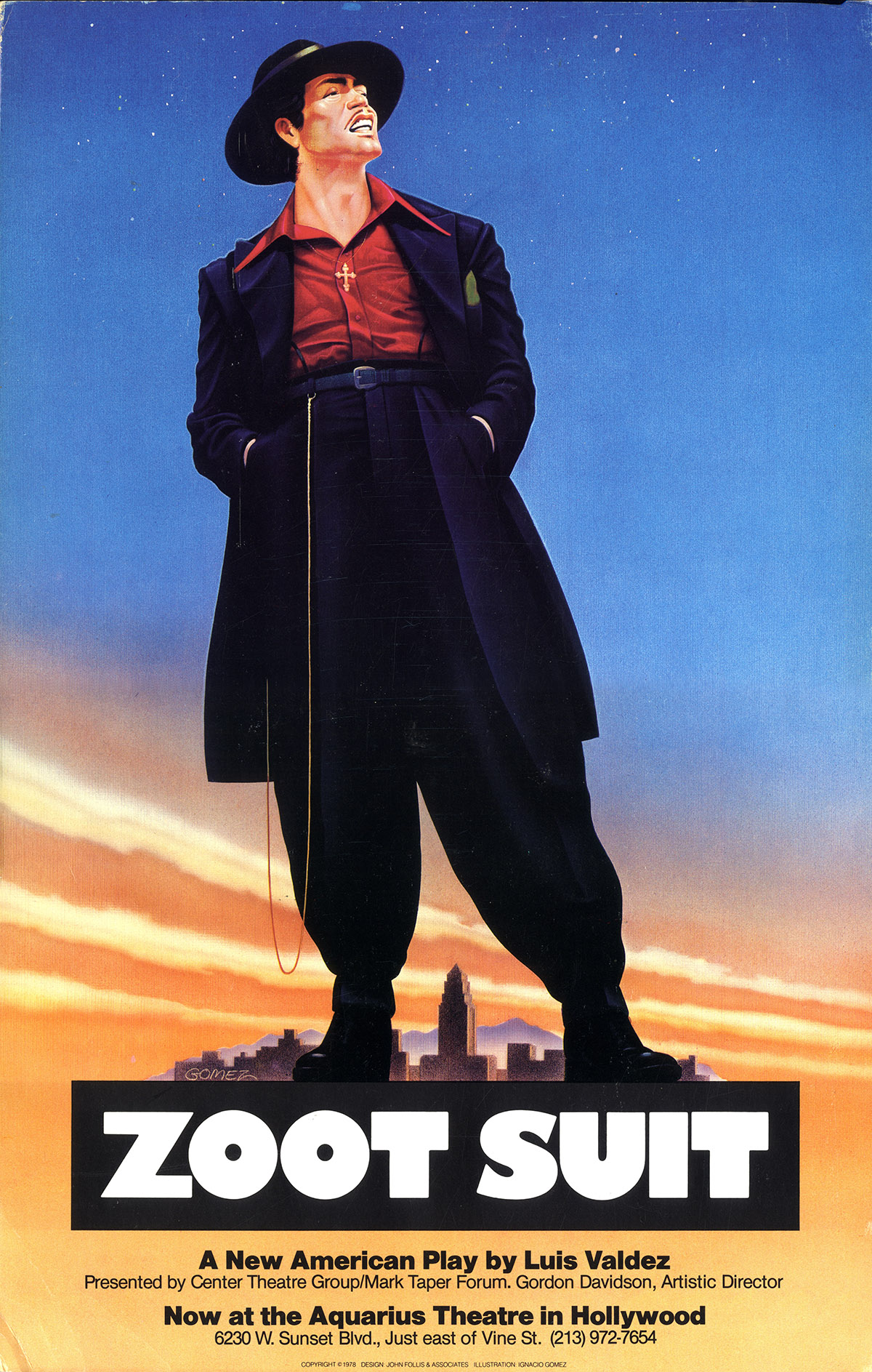Zoot Suit Image - A Look At Its Legacy
You know, when you hear "Zoot," your mind might just go to a few places. Perhaps you think of the very speedy gear triathletes wear, the kind of clothing that helps folks move quickly through water, on bikes, and during a run. Or, too it's almost, you might picture a place where furry companions get the very best care, like a comforting pet hospital. But for some people, that particular word, "Zoot," can bring up something else entirely: a very distinct, rather flamboyant style from a bygone era, something that created a powerful visual, that being the zoot suit image.
This particular look, a style of clothing that really stood out, carried with it a whole lot more than just fabric and stitching. It was, in some respects, a statement, a way of showing who you were and where you stood in the world, especially during a time when things were changing very, very fast. It wasn't just about what you wore; it was about how you carried yourself, the feeling you gave off, and the message your appearance sent to everyone around you.
So, we're going to take a closer look at this striking form of dress, what it meant to people then, and why, even now, it still holds a certain kind of fascination. It’s a story about personal expression, about fitting in, and about standing out, all wrapped up in a unique kind of clothing.
- Fortune Feimster Net Worth
- Pete Buttigieg Net Worth
- Taylor Swift Net Worth
- Meghan Markle Net Worth
- Delonte West Net Worth
Table of Contents
- The Birth of a Bold Look
- What Made the Zoot Suit Image So Striking?
- More Than Just Fabric - A Cultural Statement
- Who Wore the Zoot Suit Image?
- Why Did the Zoot Suit Image Stir Such Feelings?
- How Did the Zoot Suit Image Change Over Time?
- The Zoot Suit Image Today - Still Resonating?
- Is the Zoot Suit Image Just a Memory?
The Birth of a Bold Look
The zoot suit, as a distinctive way of dressing, really started to take shape in the late 1930s and then became quite popular in the 1940s. It wasn't something that appeared out of nowhere, you know. This was a time when many young people, especially those from certain cultural backgrounds, were looking for a way to express themselves, to show off a little, and to create something that felt truly their own. The style itself, you see, was a kind of rebellion against the more conservative, more traditional ways of dressing that were common back then. It was a statement, a visual declaration that said, "We are here, and we are different." This was a time when the world was changing, and fashion, as it often does, reflected those shifts.
What Made the Zoot Suit Image So Striking?
Well, what made this particular look stand out so much? It was the sheer amount of fabric, for one thing. The trousers, for instance, were very high-waisted, wide at the top, and then tapered down to a very narrow ankle, almost like a carrot shape. They were often quite short, too, showing off bright socks. The jackets were just as dramatic; they were very long, sometimes reaching down to the knees, with broad shoulders and wide lapels. These jackets were often called "fingertip" coats because of their length. The whole ensemble was typically worn with a long watch chain, sometimes called a "reat pleat," that draped down from the pocket, and often a wide-brimmed hat. So, it was a very exaggerated shape, something that certainly caught the eye. It was a complete departure from the typical, more fitted suits of the time, making the zoot suit image truly unforgettable.
More Than Just Fabric - A Cultural Statement
This particular style of clothing, the zoot suit, was never just about the threads or the way it was put together. It was, rather, a powerful symbol, a way for people to show their identity and to express themselves, especially when they felt like they didn't quite fit into the mainstream. It was a form of self-expression, a way to say, "This is me," in a very loud and clear manner. For many, it represented a kind of freedom, a break from the usual rules, and a celebration of their own unique cultural heritage. It was a way to make a mark, to be seen, and to feel a sense of belonging among others who shared a similar outlook. The zoot suit image became a kind of uniform for those who wanted to stand apart.
- Donnell Rawlings Net Worth
- Todd Rundgren Net Worth
- Joaquin Guzman Loera Net Worth
- Max Greenfield Net Worth
- Donald Bellisario Net Worth
Who Wore the Zoot Suit Image?
The zoot suit was worn by many different groups of people, but it became especially popular among African American, Latino, and Filipino American youth in urban areas. These were young people who were often creating their own vibrant subcultures, and the zoot suit fit right in with that. It was a way to feel connected to a community, to show off a certain swagger, and to express a kind of cool confidence. Musicians, particularly jazz and swing performers, also took to the style, making it even more widely recognized. It was a look that said you were hip, that you were in the know, and that you had a distinct sense of style. The zoot suit image, in many ways, became synonymous with these groups and their cultural contributions.
Why Did the Zoot Suit Image Stir Such Feelings?
The zoot suit, for all its flash and flair, actually caused a lot of strong reactions, both good and bad. During World War II, when many resources were being rationed, the sheer amount of fabric used in a zoot suit was seen by some as wasteful, almost unpatriotic. This led to tension, especially between those wearing the suits and some members of the military. There were even some very unfortunate clashes, known as the Zoot Suit Riots, particularly in Los Angeles in 1943. These events showed just how much emotion this particular style of clothing could stir up. It wasn't just about fashion; it was about social divisions, about prejudice, and about the struggles for acceptance. The zoot suit image, in this context, became a flashpoint for deeper societal issues.
How Did the Zoot Suit Image Change Over Time?
Like most fashion trends, the popularity of the zoot suit image didn't last forever in its original form. After the war, new styles emerged, and the zoot suit, while still remembered, became less common for everyday wear. However, its influence didn't just disappear. Elements of its exaggerated silhouette and bold statement could be seen in later fashion movements, like the wide-legged trousers of the 1970s or certain hip-hop styles. It also continued to be worn in specific subcultures, particularly within the Chicano community, where it remained a powerful symbol of identity and heritage. So, while the immediate craze faded, the spirit of the zoot suit, its commitment to a unique and expressive look, certainly lived on in different ways.
The Zoot Suit Image Today - Still Resonating?
It's interesting to consider how this particular style, the zoot suit, still holds a place in our collective memory. Even now, decades later, when you see a picture of a zoot suit, it instantly communicates a certain era, a certain attitude, and a very specific cultural moment. It pops up in movies, in music videos, and sometimes even on fashion runways, though usually as a nod to its historical significance rather than a direct copy. It has a kind of timeless appeal for those who appreciate its boldness and its history. For many, it represents a period of resistance and self-assertion, a time when clothing was used as a powerful tool for identity. So, yes, the zoot suit image definitely continues to resonate, not just as a fashion item, but as a piece of social history.
Is the Zoot Suit Image Just a Memory?
You might wonder if the zoot suit is just something from the past, a relic that only exists in old photographs and history books. But actually, that's not quite the case. While it might not be a common sight on the streets today, the zoot suit image continues to be a very important symbol for certain communities, particularly within the Chicano culture, where it's often seen as a point of pride and a connection to a rich heritage. It's worn during special events, like dances or cultural celebrations, keeping its spirit very much alive. So, it's more than just a memory; it's a living part of some traditions, a reminder of a time when fashion was a powerful way to speak without saying a single word. It shows how clothing can carry meaning across generations, something truly special.
The zoot suit image, as we've explored, was far more than just a passing fashion trend. It was a bold statement of identity, especially for young people in the 1940s who were looking to express themselves and their cultural roots. This distinctive style, with its exaggerated shapes and generous use of fabric, became a powerful symbol of self-assertion and belonging. While it stirred up strong feelings and even conflict during its peak, its influence has continued to be felt in various ways through the years. Today, the zoot suit image remains a significant part of cultural memory, particularly for communities who see it as a proud link to their past and a symbol of enduring spirit.
- Eric Lloyd Net Worth
- Johnny Damon Net Worth
- Dave Franco Net Worth
- Future Net Worth
- Taylor Kinney Net Worth

Pin by Moby Sitca on Outfit Inspo in 2024 | Zoot suit, Suits designs

Zoot Suit for Women | El Pachuco Zoot Suits

ZOOT SUIT (1978) Theatre poster - WalterFilm